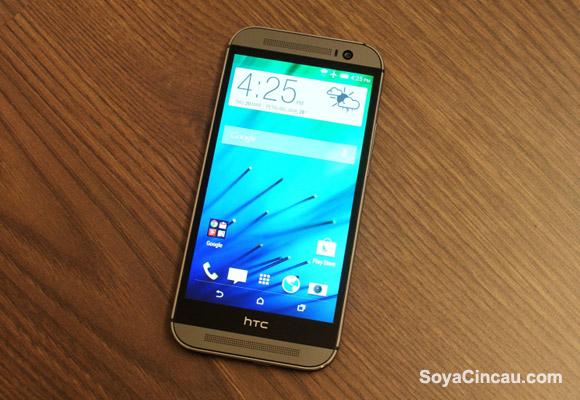HTC has finally lifted the covers off its new flagship smartphone. With a 5-inch full HD Super LCD 3 Gorilla Glass 3 display, 2.5GHz Snapdragon 801 processor, 2GB of RAM and two cameras at the back, the new HTC One (M8) is much improved over its predecessor but with capable competitors like the Galaxy S5 and Xperia Z2, is it good enough?
This is our first impressions of the HTC One (M8).
Anticipation for HTC’s new flagship smartphone may have had a negative affect on the device. With all the leaks — and most of them fairly accurate — there was very little to look forward to when HTC finally made the One (M8) official. But the leaks can only take partial blame to the mixed reactions that HTC is getting for its new device. The bigger saboteur in this case could be HTC themselves.
On the surface of things, the One (M8) looks to be on par with its contemporary, the 2.5GHZ Snapdragon 801 quad-core processor with 2GB of RAM is probably the best processor you can get right now and the all-new unibody chassis is the best we’ve ever seen but in many ways the One (M8) is overwhelmed by the competition.
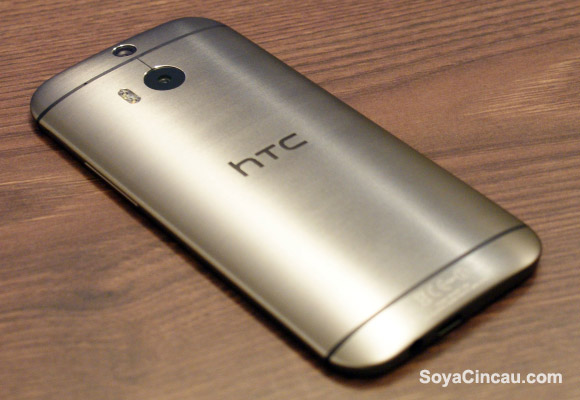
But first let’s talk about the things we like about the M8.
We like the it runs on Android 4.4.2 KitKat. We like that Sense 6.0 is much improved over previous versions and along with it there’s also and updated BlinkFeed that’s easier to use with access to more content content partners than before.
We like that you don’t really have to worry about battery life thank’s to the battery frugal Snapdragon processor and a new feature called the “Extreme Power Saving Mode”. Like the name suggests, HTC’s Extreme Power Saving Mode promises to conserve as much battery juice as possible by switching off power-hogging features while still giving access to basic phone functionality like calls and text messaging. In its most frugal mode, HTC claims the Extreme Power Saving Mode can provide up to 30 hours of standby time with just 10% of battery power left but it’s not unique — Samsung has a similar feature called “Ultra Power Saving Mode“, likewise Sony with its “Extended Standby Mode”.
We can’t stop say enough good things about how beautifully build the thing is. Like its predecessor, HTC has set a new benchmark with the One (M8). It is one of the best looking and best build phones you can get right now, nothing even comes close to what HTC has achieved with the M8. It feels like silk in your hands. A pleasure to touch, hold and use, this is another level of premium.
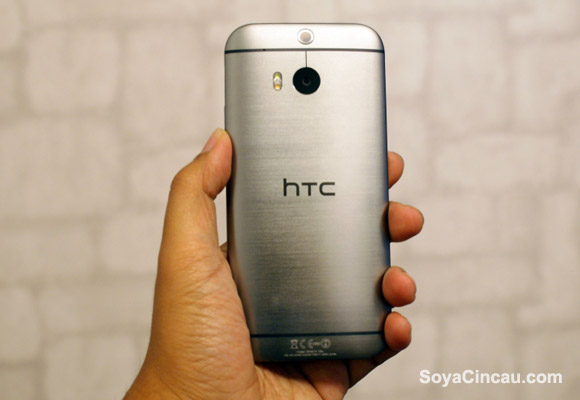
The unparalleled quality can be attributed to more metal being used and the unique process in which the metal alloy is treated. Where the original featured a back panel that was 70% metal, the back panel of the One (M8) incorporates 20% more metal, wrapping all the way around the sides and right up to the edge of the display screen, making it very comfortable to hold with a finishing that’s unlike anything else.
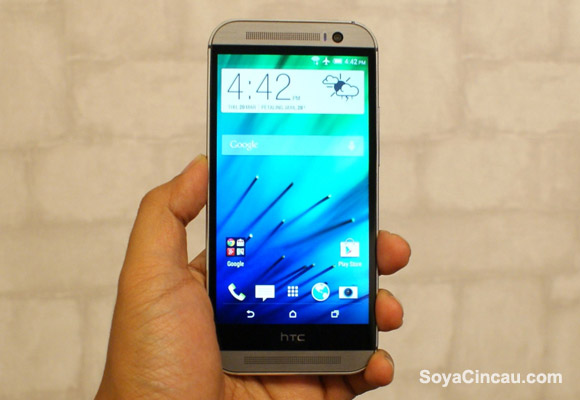
Another thing that we like with the One (M8) is the HTC BoomSound dual-front speakers. BoomSound blew us away in the original One and it’s more impressive now in the One (M8) with significantly improved speakers to produce detail mids and clear highs without sacrificing bass. The speaker chambers have also been redesigned to produce sound that’s 25% louder than the original HTC One. And while the concept has been copied by others, HTC is a distinct leader when it comes to packing big sound in a small package.
And then there’s the stunning display. The HTC One (M8) features a larger 5-inch full HD Super LCD 3 Gorilla Glass 3 display (original One had a 4.7-inch display), and as you’d expect from HTC, the display is among the best in the industry. Details are crisp while colours are bright and vivid colours, and there’s the added bonus of a wide, unhindered viewing angle. In short, you will not be disappointing with the sights and sounds of this device.
So that’s all the good done with. Here’s what we don’t like.
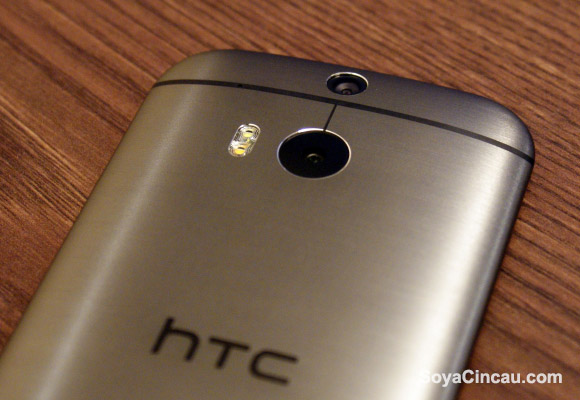
By far the biggest drawback of the HTC One (M8) is its camera. HTC say that the UltraPixel camera has been improved and updated to produce better pictures, especially in low light conditions. In theory, the UltraPixel concept is an impressive one — create a sensor with bigger (not more) pixels to collect more light that in turn will produce better pictures — in practice however, UltraPixel is flawed.
HTC users will know the problems with UltraPixel well, lack of detail, no real gains in low-light performance and that dreaded purple tint issue. While we can’t say that the One (M8) will have the same purple tint issue, the lack of detail and so-so low-light performance evident especially when you see how accomplished its rivals are at taking really good pictures and video.
The biggest buzz around the One M8 is the secondary rear camera located just above the primary rear camera. This camera acts as a depth sensor allowing you enhance depth-of-field in pictures in post processing. HTC has also added new filters and effects to take advantage of the dual-camera setup. Also new for the One M8 is the dual-tone that HTC claims produces a more natural lighting and reduces flash-burns. But all these seem moot when you take into account how inferior the UltraPixel camera is when compared to what other flagship smartphones.
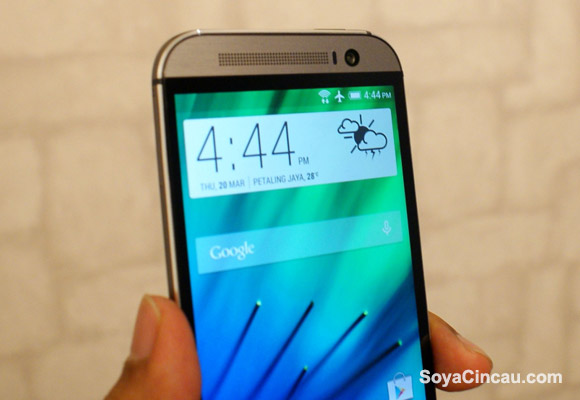
HTC’s new Motion Launch feature is also a bit of a hit and miss affair. Motion Launch is a feature that uses gestures to quickly launch applications using swipes and taps and its easy enough to use but remembering the many gestures can take some time and we have issues with the M8 being inconsistent when detecting gestures. Ultimately, Motion Launch is a nice feature but it will be just a gimmick for most people because of its learning curve and gesture recognition issues.
Aside from the high-end processor and build quality, the One (M8) lacks behind when it comes to features as well. With just 2,600mAh, the M8’s battery capacity is the smallest in its class. And with the competition packing heart rate sensor, high-megapixel camera and, water- and dust-resistance into their devices, the M8’s spec sheet looks plain in comparison. Yes, specs are just part of what makes a phone great but spec are also important calling cards when there are just so many really good devices to choose from, and in this respect the M8 doesn’t have a lot going for it.
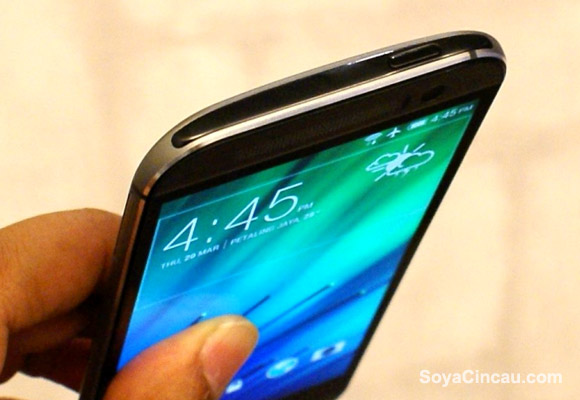
Yes, there’s LTE connectivity, there’s an infrared blaster so you can use the device as a remote control, there’s NFC and support for microSD cards up to 128GB in size. Heck, HTC will also throw in 50GB of Google Drive storage free for two years. All this is mighty impressive when you compare the M8 with nothing else but when you start bringing the Galaxy S5, the Xperia Z2 and even the Find 7, you’ll quickly find it more and more difficult to make a case for the M8.
At the end of the day, there’s a lot to like about the HTC One (M8) but is it enough to make us get one? The answer is obvious.
HTC One M8 Hands-on Video
Related HTC One (M8) Posts
New HTC One M8 officially announced
New Dot View Cover for HTC One M8
HTC One M8 Full Specifications
Sample Video and Pictures from the HTC One M8
Hands-on with the all new HTC One M8
Is the all new HTC One M8 Water Resistant?

